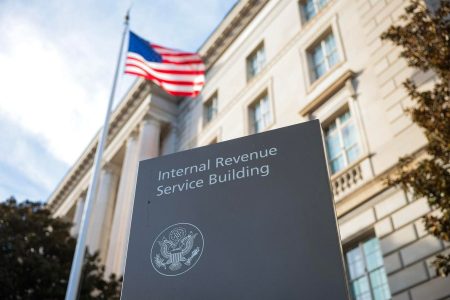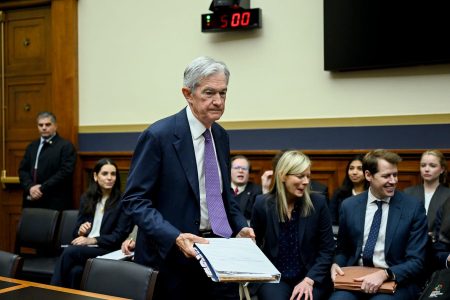Bond ETFs: A Quiet Revolution in Investing
While the stock market and cryptocurrencies often dominate financial headlines, bond exchange-traded funds (ETFs) have experienced a surge in popularity, quietly attracting significant investor interest. Though perceived as less exciting than their flashier counterparts, bond ETFs offer a crucial element often overlooked in the pursuit of high returns: stability. This article explores three distinct bond ETFs, each offering a unique approach to income generation and capital preservation in the current market environment. The focus here is on U.S. Treasury bond ETFs due to their perceived safety, even in a climate of rising national debt, given the government’s ability to influence monetary policy.
Selecting the Right Bond ETF for Your Portfolio
The selection of these particular ETFs stems from a long-term investment philosophy prioritizing income and capital preservation, with growth as a secondary objective. The current interest rate environment, significantly higher than the near-zero rates of the past decade, makes bonds a compelling alternative to stocks, especially for investors seeking lower volatility. While some bond ETFs offer higher returns with stock-like volatility, these selections emphasize higher-quality, government-backed securities for added security. The aim is to provide a range of options catering to diverse risk tolerances and investment horizons.
1. iShares Short Treasury Bond ETF (SHV): Capitalizing on Short-Term Strength
The SHV invests in short-term U.S. Treasury bills with maturities between 3 and 12 months. Surprisingly, despite their short duration, these bills currently offer yields comparable to or even exceeding those of longer-term bonds. This phenomenon is attributed to the persistently high short-term interest rates maintained by the Federal Reserve. SHV presents a compelling opportunity for investors seeking competitive yields with minimal interest rate risk. Its liquidity, derived from the short-term nature of the underlying assets, provides additional flexibility for investors.
2. Invesco Equal Weight 0-30 Year Treasury ETF (GOVI): Balancing Risk Across the Maturity Spectrum
GOVI embodies the principle of a bond ladder strategy, allocating equally across U.S. Treasury bonds with maturities ranging from 0 to 30 years. This diversified approach mitigates the risks associated with interest rate fluctuations. Given the uncertainty surrounding future interest rate movements and the potential impact of changing government policies, GOVI’s balanced approach offers a compelling solution. By holding bonds across the entire maturity spectrum, the ETF effectively averages out interest rate risk, providing a more stable return profile compared to funds concentrated at a single point on the yield curve. The regular rebalancing as bonds mature maintains the laddered structure, simplifying the management process for investors.
3. iShares 20+ Year Treasury Bond Buywrite Strategy ETF (TLTW): Enhancing Income with Covered Call Options
TLTW adds a layer of complexity by incorporating a covered call option strategy. While holding long-term Treasury bonds with maturities of 20-30 years, TLTW simultaneously sells call options on these bonds, generating additional income. This strategy enhances the yield compared to a traditional long-term bond ETF, offering a potential advantage in stable or declining interest rate environments. However, it’s crucial to acknowledge the downside risk: if interest rates rise sharply, the price of the underlying bonds will fall, and while the option premium mitigates some of this loss, it might not fully offset it. This makes TLTW a more tactical choice, suitable for investors with a specific view on the direction of long-term interest rates.
Why Focus on U.S. Treasury Bonds?
The decision to focus solely on U.S. Treasury bond ETFs is driven by a preference for credit quality and stability, especially given the current economic landscape. While corporate bonds and international bonds may offer higher yields, they also carry greater credit risk. U.S. Treasury bonds, despite the nation’s substantial debt burden, are still considered a safe haven due to the government’s unique ability to influence monetary policy. This backing provides a level of assurance that, while not eliminating risk entirely, significantly reduces the potential for default compared to other bond issuers.
Strategic Bond Investing in a Complex Market
The bond market, often overshadowed by the perceived excitement of stocks and cryptocurrencies, offers valuable opportunities for investors prioritizing income and capital preservation. The three highlighted ETFs – SHV, GOVI, and TLTW – present distinct strategies for navigating the complexities of the current bond market, each catering to different risk profiles and investment objectives. While the potential for outsized returns may be lower compared to other asset classes, these bond ETFs offer a crucial element for long-term financial success: stability and predictability in a volatile world. By understanding the nuances of each ETF, investors can make informed decisions aligned with their individual financial goals.










